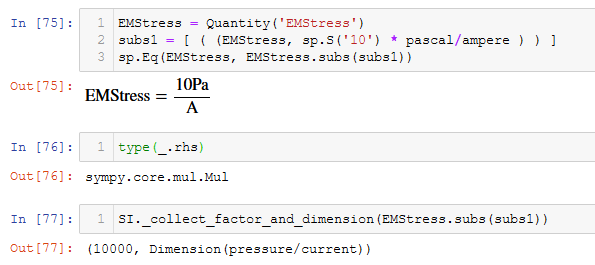New issue
Have a question about this project? Sign up for a free GitHub account to open an issue and contact its maintainers and the community.
By clicking “Sign up for GitHub”, you agree to our terms of service and privacy statement. We’ll occasionally send you account related emails.
Already on GitHub? Sign in to your account
Quantity changes behavior depending on presence of abbrev parameter #20095
Comments
|
I came across the above peculiar behavior, and I find it very confusing. |
|
More peculiar behavior: in the absence of an "abbrev" parameter the method .convert_to does not seem to work properly. |
|
More weirdness, see above. |


The text was updated successfully, but these errors were encountered: